Loon Update
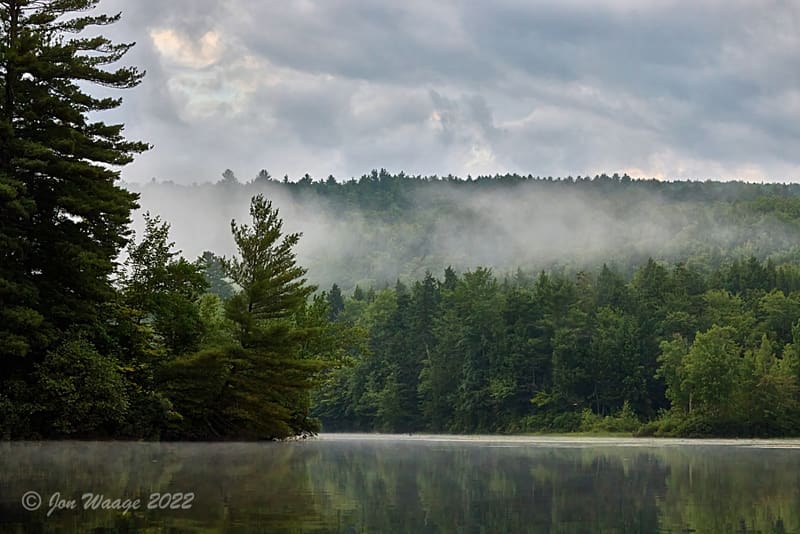
|
Loon Update
|
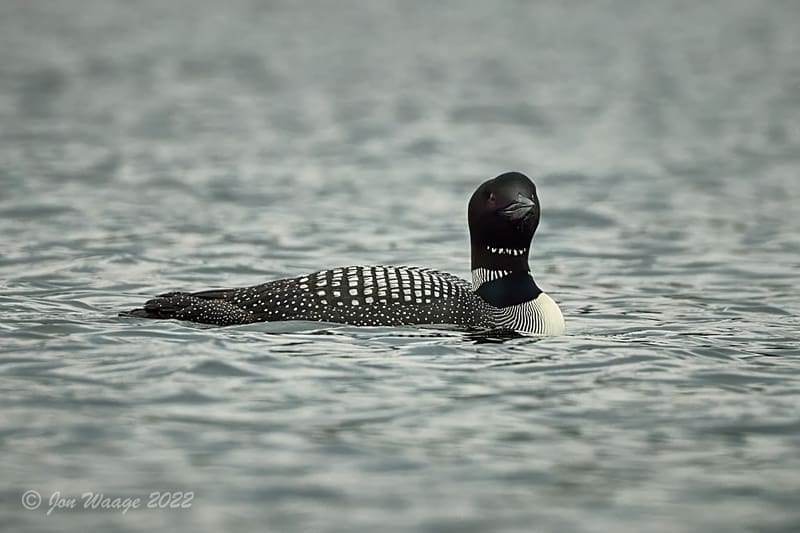
As of today we still have 4 adult loons on the Lake. Two tend to hang out near the Elkins end and may be a pair. Neither loon is banded. The one shown above was at mid lake diving when photographed. The other two Loons on the Lake are our pair and they are still spending most of their time near the cove. Our pair and one or both of the other Loons have been observed doing circle dances and calling loudly.
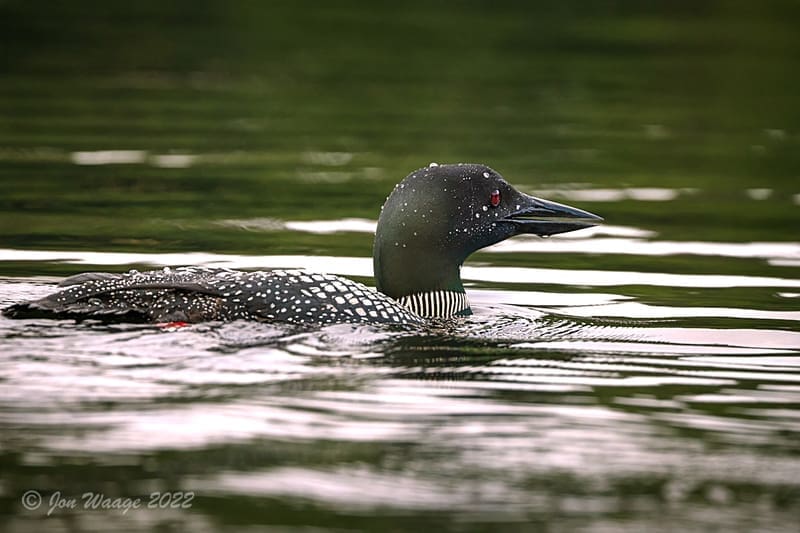
The banded female of our pair
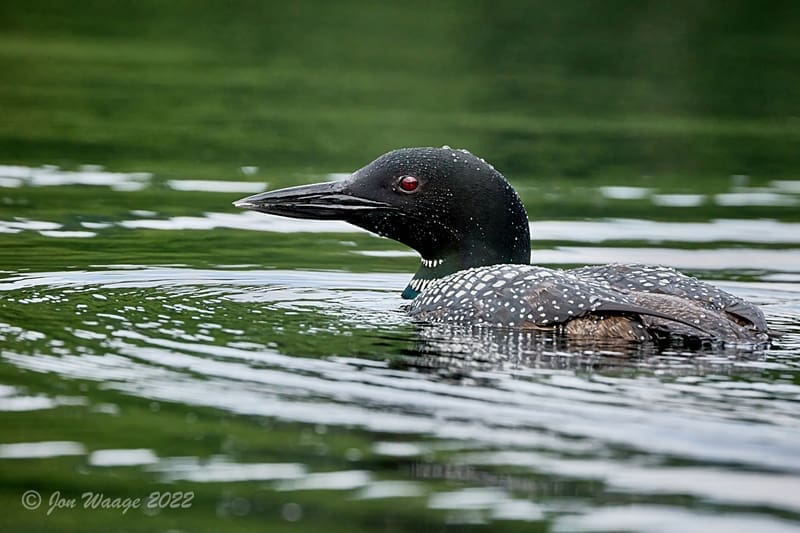
The male of our pair
We have been getting calls and texts about Loons in trouble over the past few weeks. We greatly appreciate you letting us know of any Loon in trouble. Some Loon behavior can seem alarming but is actually normal. For example the loon in the photo below is vigorously thrashing about in the water. However, it is bathing, not in distress. Loon.org has an excellent page describing normal Loon behavior.

|
No Loon babies to show you, but…
|
Our meadow/yard has been full of visitors this season. Jen’s trail cams have recorded regular visits by Turkeys, coyotes, gray foxes, bears, porcupines, bobcats and deer.
All are welcome and bring great joy. Many provide some services as well. Turkeys are a great example.

Our meadow is full of insects and that is what most birds feed their young. Every summer our yard attracts several Turkey females and their chicks.
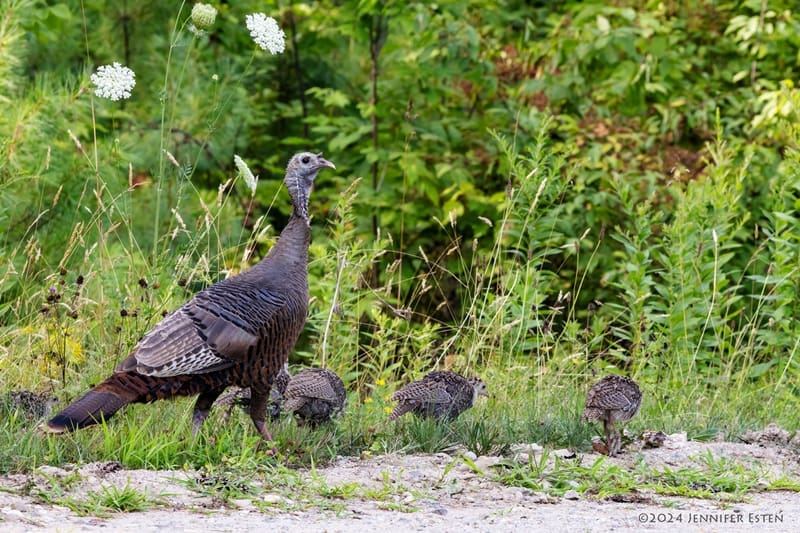
We are pleased to share our abundance of grasshoppers and ticks.
We also have frequent visits from White-tailed Deer who come to browse on the wide variety of plants in our yard. Although deer are very selective browsers they can still, at high population levels, take a toll on developing forests. Yes they go after favorite flowers, but our yard is so full of tasty plants they don’t do much damage to any particular one. The doe below has even helped us keep the water lilies from totally taking over our pond.
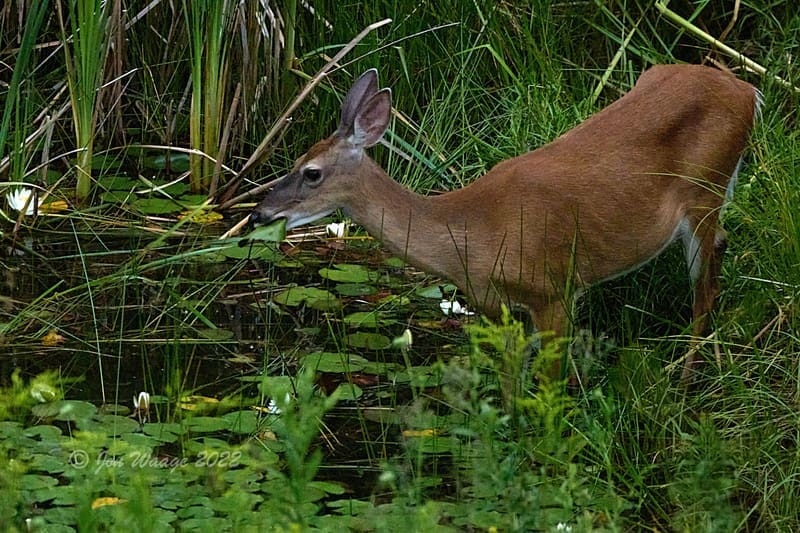
She has a distinctive dark face and is a frequent visitor. A few weeks ago she brought along her fawn. Without any Loon chicks this year, we will share a few other “baby photos” with you.

It didn’t take long for the youngster to start exploring!

The fawn was only a few days old and still growing into its legs.
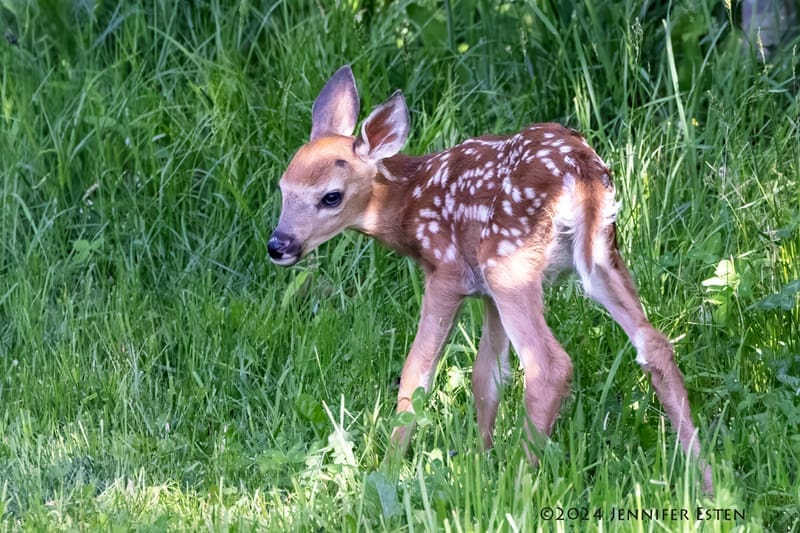
There were frequent breaks for refueling. The success of young deer depends on a lot of good quality milk and that milk depends on a lot of young succulent leaves and access to water.
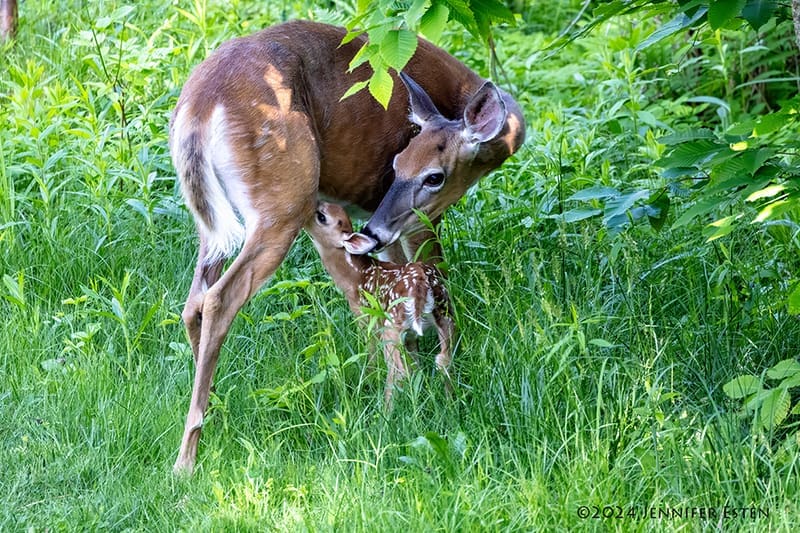
The youngster grew fast and spent several nights sleeping in a bed of sedges and rushes.

It wasn’t long before its twin showed up. White Tailed Deer usually have twins, not always with the same father. The twins have been a joy to watch.

They have explored much of the yard, always keeping eyes and ears tuned to their surroundings
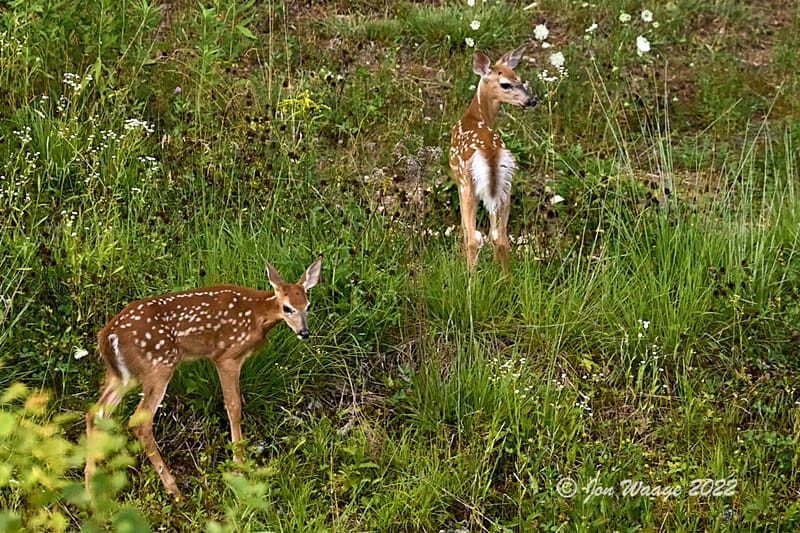
They race along the paths we mow through the meadow, to their delight and ours!
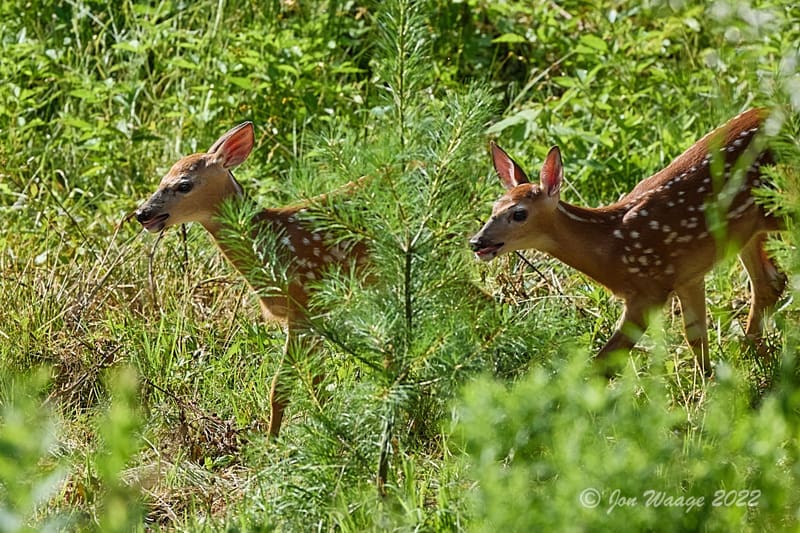
Still growing, they will start feeding on their own in a few weeks.
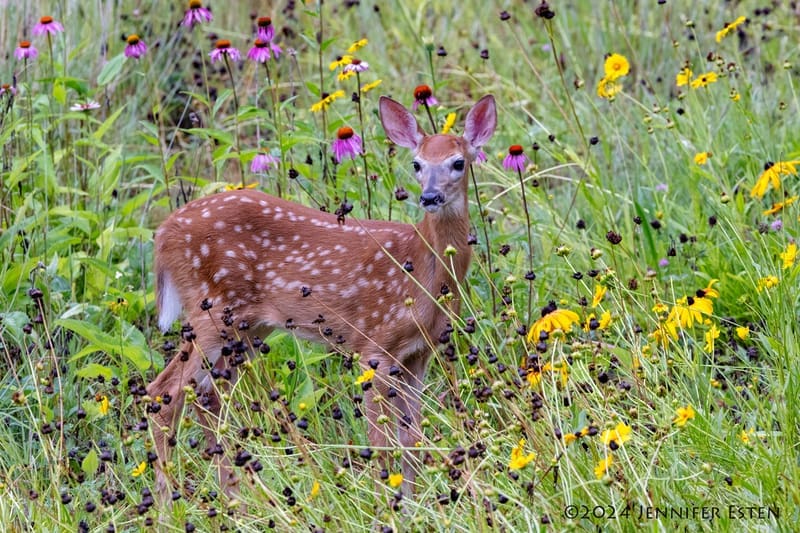
When mom decides it is time to hide or leave, she sends a signal.
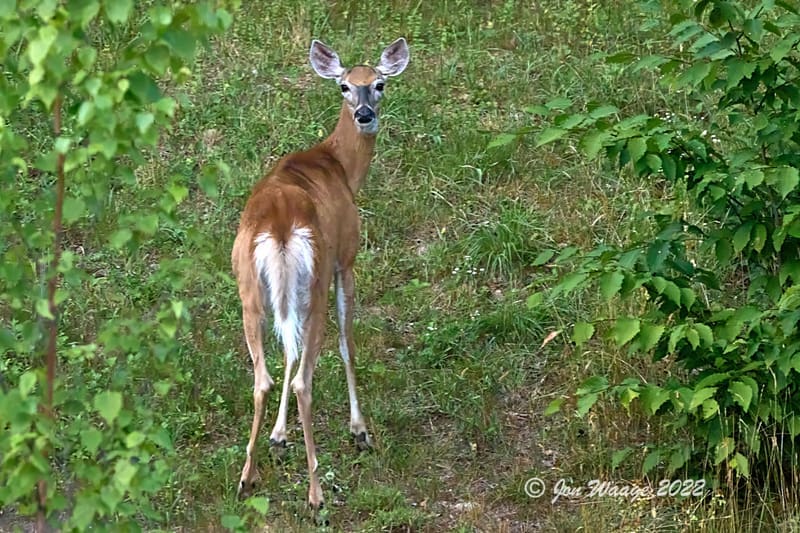
Signal received and soon they are off to join their mother.
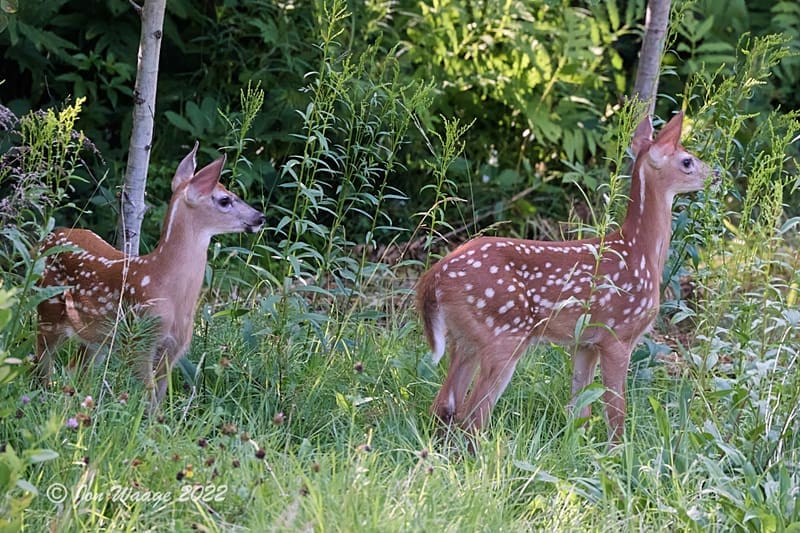
Yes, deer can be a nuisance, but with a place for them to feed and hide, explore and play, it has been worth some nibbled saplings and flowers!
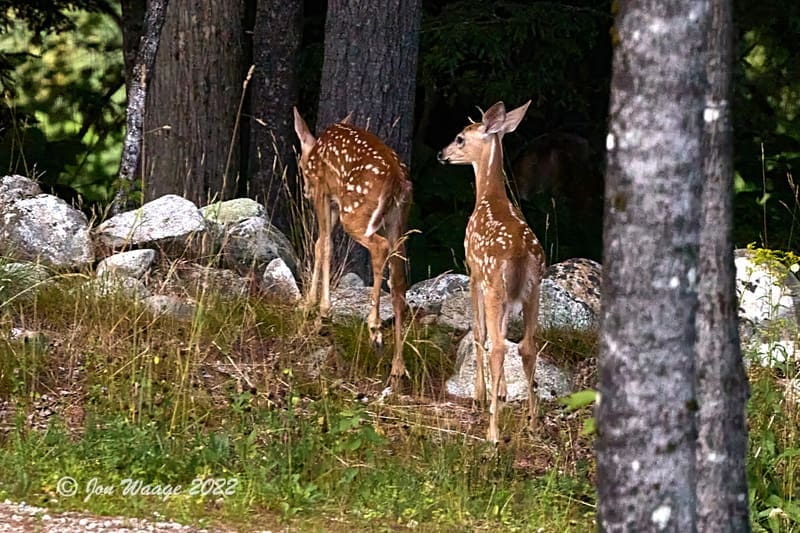
Bye for now… Jon and Jen
Text and Photographs by Jen Esten and Jon Waage
